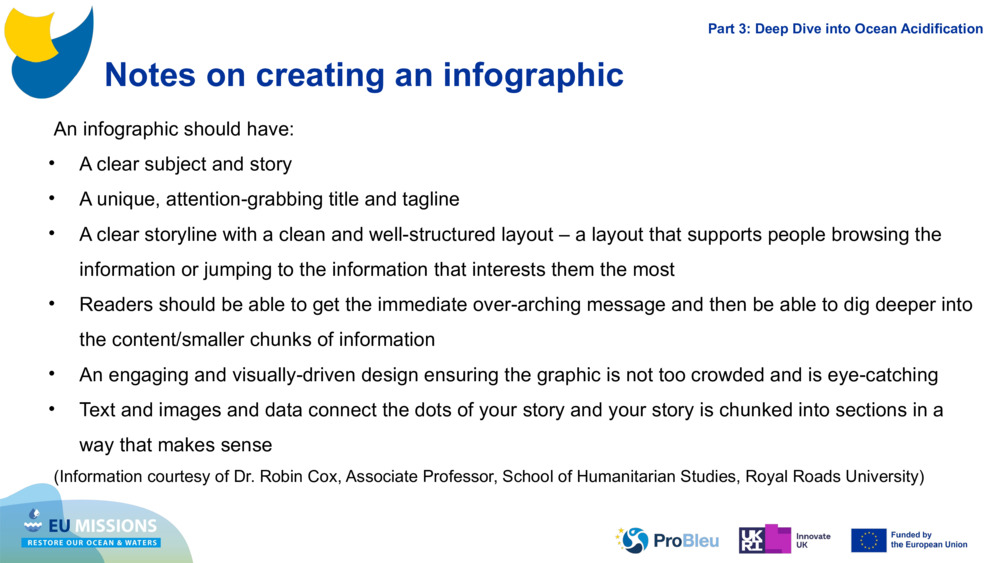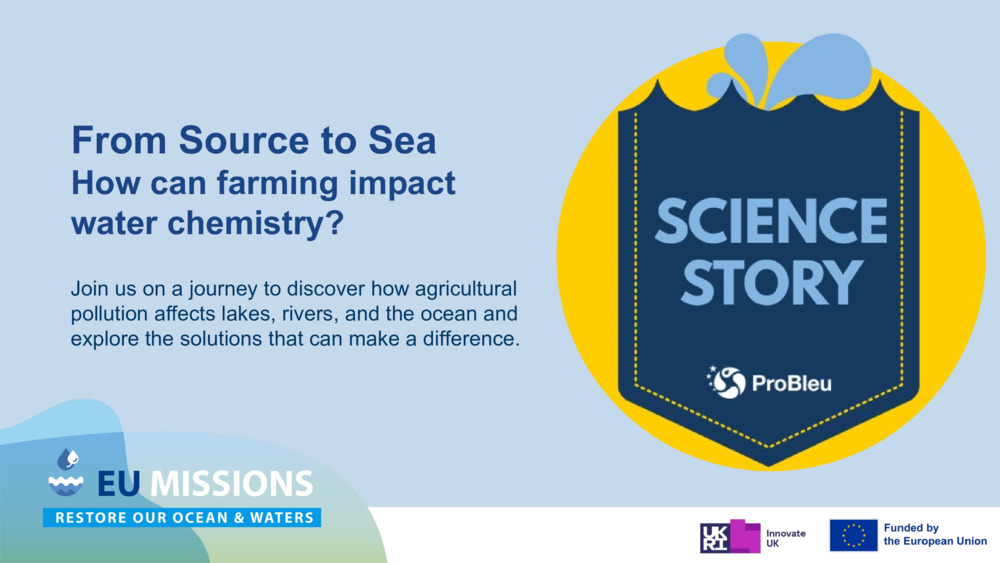Notes on creating an infographic
Notes on creating an infographic
Notes on creating an infographic An infographic should have: A clear subject and story A unique, attention-grabbing title and tagline A clear storyline with a clean and well-structured layout – a layout that supports people browsing the information or jumping to the information that interests them the most Readers should be able to get the immediate over-arching message and then be able to dig deeper into the content/smaller chunks of information An engaging and visually-driven design ensuring the graphic is not too crowded and is eye-catching Text and images and data connect the dots of your story and your story is chunked into sections in a way that makes sense (Information courtesy of Dr. Robin Cox, Associate Professor, School of Humanitarian Studies, Royal Roads University) Part 3: Deep Dive into Ocean Acidification

Oriģinālais slaidu klājs: Water Chemistry with Plymouth Marine Laboratory
Tēmas: Ilgtspējīgi resursi. Dezoksigenācija. Okeāns. Saldūdens. Okeāna ķīmija. Uzturvielu piesārņojums.
Piemērots vecums: 12. 13. 14. 15. 16. 17. 18.
Atslēgvārdus: Bioloģija. Eitrofikāciju. Hipoksiju. Ķīmija. Ķīmiskās reakcijas. Lauksaimniecības. Molekulas. Ogleklis. Ogļskābā gāze. Okeāna paskābināšanās. Ph. Rādītāji. Sārmainība. Skābums. Uzturvielu.
Augšupielādējis: pml-admin
Komplektu skaits, kas izmanto šo saturu: 1
Licensed under CC BY 4.0
Šis saturs ir izmantots šādās resursu paketēs:
Ūdens ķīmija ar Plimutas jūras laboratoriju
Mācīšana par ūdens ķīmiju ir svarīga, jo tā savieno galvenās zinātnes ...
Skatīt zinātnes stāstu